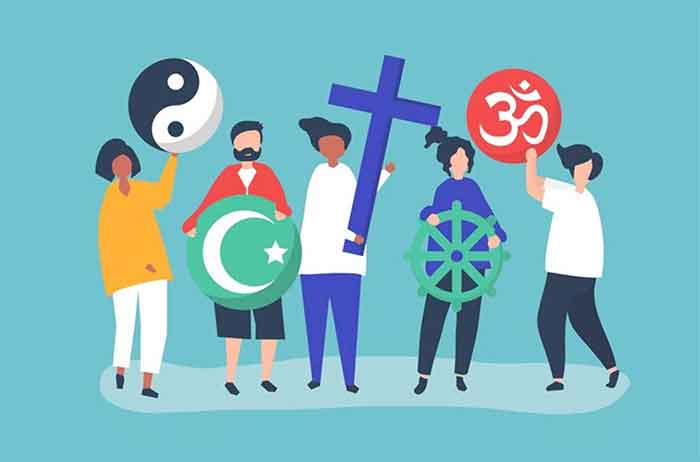
For the singular thing about India is that you can only speak of it in the plural.-Shashi Tharoor
One feature that is most often noticed about India is its unity in diversity. This overworked cliché has become a part of India’s self identity. There are very few countries on the earth which have such an enormous cultural diversity that India has to offer. Nevertheless, there has been an underlying continuity in identity. Here we will find out how different factors appear as a source of diversity but from another vantage point, as a bond of unity.
Geography: The geographical diversity of India is quite striking. It stretches from the Himalayas in the north to Kanyakumari in the south and Kutch in the west to Arunachal in the east. This makes it the seventh largest country. All the three major climates- temperate, tropical and polar are found in India. However, geography has engendered unity too. Shut off from Asia by the Himalayas and from the world by seas, India marks out as a geographical entity. Also, nature has placed within her most resources. The great variety prepared a readiness to accept differences. The infiltrations by newcomers were slow, so development of each locality was allowed unhampered. The geographic unity had its effect on economic life. The quality of land permitted gradual expansion of cultivation. The primarily agricultural economy led to the development of common characteristics and outlook.
Polity: The idea of bringing the whole country under one central authority has always been on the minds of great kings and statesmen of India. The ideal of political unity is reflected in the concepts of Bharatvarsha and Chakravarti. The socio-political contributions of rulers such as Chandragupta Maurya, Ashoka, Akbar and Jahangir are highly commendable. The British also tried to establish political unification under a paramount power. After Independence the unity of India is expressed in the institution of the nation. It is the product of the freedom movements as well as the constitutional legacy of the British. There are different political parties and diverse political ideologies. Therefore, politics is both a factor of unity and diversity.
Caste: India is a country of castes. This term is used in two senses: Varna and Jati. Though there are only four Varnas, there are more than 3,000 jatis which are hierarchically graded in different ways in different regions. This diversity is turned into unity by the jajmani system- a system of functional interdependence of castes. The jajmani relations were between a food producing family and the families that supported them with goods and services. A ‘jajman’ needed members of both high and low castes to perform necessary tasks. This interdependence was broadly supportive. It explains why it was conspicuous in villages.
Religion: Indian is a multi-religious country. There are Hindus, Muslims, Christians, Sikhs, Buddhists, Jains and others. All religious groups are differentiated internally. Hinduism has sects like Shaiva, Vaishnava, and cults like Arya Samaj, BrahmoSamaj, Saibaba, etc. There are Shia and Sunni in Islam, who not only respect each other but stand shoulder to shoulder in case of any humanitarian crisis. While Hindu and Muslims are found in almost all parts of India, the remaining minority religions have their pockets of concentration. Christian missionaries have played and still playing extremely relevant role for the development in interior and remote regions of India. Such humane aspects can be easily seen among the Sikhs and Buddhists. There has been a great degree of tolerance and, in fact, exchange. Some religious places like Ajmer have acquired a character and popularity that goes beyond a single community. Similarly, festivals like Diwali and Dussehra are celebrated at least in a limited way by many religious communities. In the field of devotion (bhakti) the saints and Sufis had many commonalities. Scholars like Mushirul Hasan and Imtiaz Ahmad have studied the innate pluralism in the Islam of South Asia. BR Ambedkar’s Buddhism and Sarna religion of the Adivasis are big examples of multiculturalism.
Languages: Famous linguist Grierson has noted 179 languages and 544 dialects in India. Eighteen languages are recognized by the constitution. All major languages have regional and dialectical variations. Their languages belong to three families: Indo-Aryan (north Indian languages), Dravidian (south Indian) and Mundari (tribal). This linguistic diversity notwithstanding, we have always had a sort of link languages, though they varied from age to age. In ancient times they were Sanskrit and Pali, in medieval age Persian and Urdu and in modern times we have Hindi and English. It is incorrect to claim that the whole of north India speaks only Hindi as there are many dialects like Awadhi, Bhojpuri, Maithili, Bundeli, Malwi, etc.
Culture: Hinduism which was and still is demographically dominant seeks to eliminate the beliefs and practices of other religions. Innumerable tribes, castes, sub-castes, clans, sections and communities seek to maintain their own style of life. Many sociologists have recorded in detail the immense variety in the habits and practices of the people in different geographical regions. The distribution of material traits such as dress, habitation, arts and crafts, endless variety of food and their preparation makes India a living example of regional diversity. Culture is also a source of unity because of its syncretic quality. The role played by Indian religion, philosophy, art and literature in bringing about unity is conspicuous. Joint family system(s)are found throughout the country. Films and television channels have strengthened a national collective consciousness.
Evaluation: The above account of ‘unity in diversity’ should not be taken to mean that we have always had a smooth sailing with no incidents of caste, communal or linguistic riots and secessionist tendencies. There have been at times serious riots backed by narrow minded politicians, bureaucrats, criminals and bourgeoisie. They have stalled the progress of India and kept poverty, inequality, patriarchy and casteism intact. The redeeming feature is that the bonds of unity have always emerged stronger that the forces of disintegration. BR Ambedkar’s States and Minorities (1947) is still relevant.
“In our heterogeneity and in our openness lies our pride.”-Amartya Sen.
Qayam Masumi, a graduate from Tata Institute of Social Sciences, is a passionate social activist dedicated to championing the rights of marginalized communities. Focusing on the homeless, refugees, immigrants, and trafficked individuals, Qayam tirelessly tackles the challenges faced by these vulnerable populations. His commitment goes beyond grassroots activism, as he channels his fervor into impactful written works that bring attention to social injustices. Qayam’s advocacy transcends borders, reflecting his relentless efforts to create positive change and raise awareness for those too often overlooked in society
















































